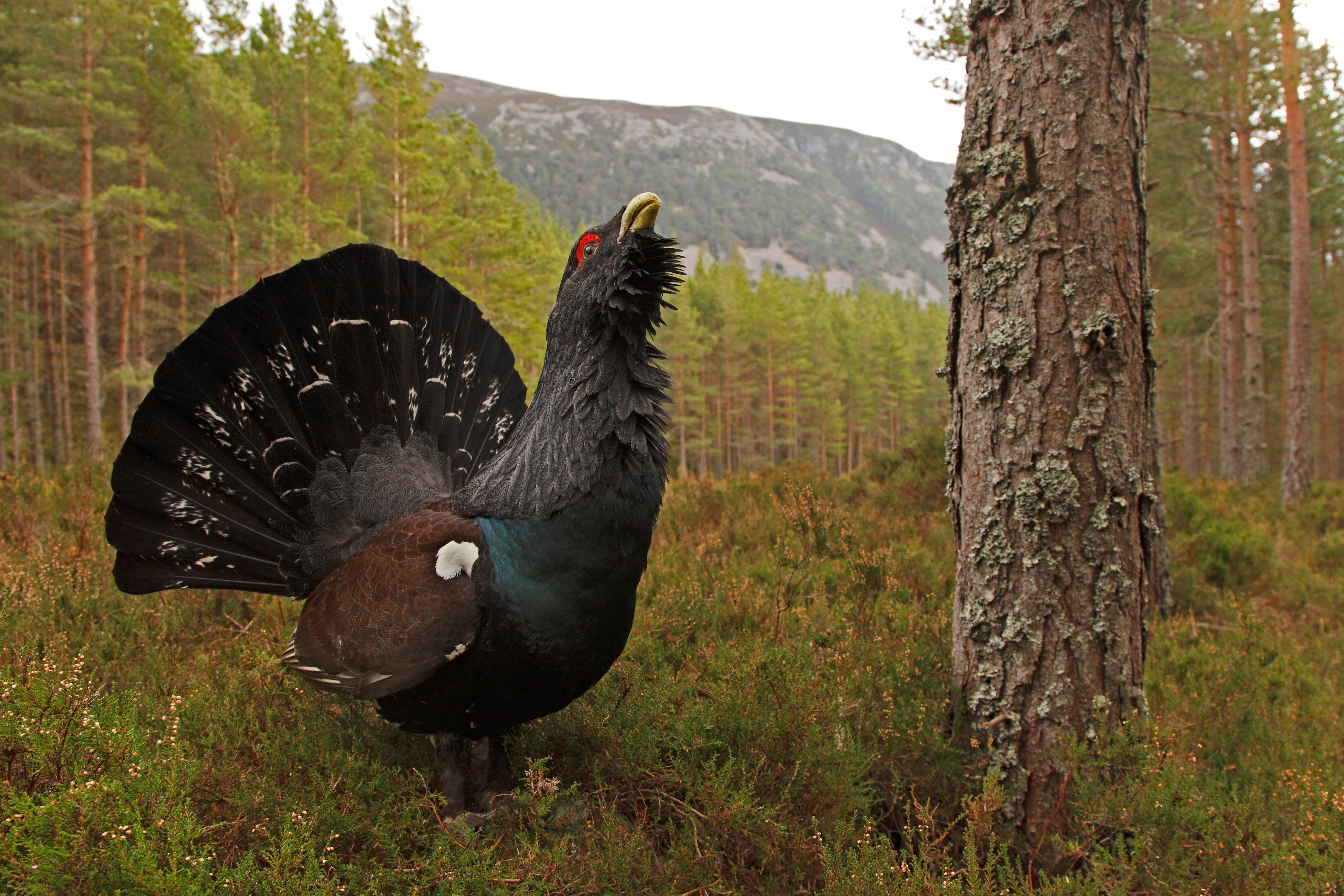UK capercaillies could be extinct again in 20-30 years, report warns
The study says intensive measures are needed to conserve the birds’ population.

The “iconic” capercaillie is likely to become extinct again in the UK within two to three decades if the current trend in population decline continues, a report has warned.
The study, from a sub-group of the NatureScot Scientific Advisory Committee (SAC), also warns that current breeding success appears to be too low to allow recovery of the population of the birds, which are found only in Scotland.
It said that “renewed intensive measures” are needed if the population is to be conserved, focusing on options that will improve the survival of eggs and young chicks.
The report warned that any delay in enacting these “might result in the population declining to a point where extinction becomes inevitable.”
The measures proposed include controlling predators such as crows, foxes and pine martens, and “diversionary feeding” of predators which would involve offering them alternative food during the breeding season.
The report suggests creating refuges for capercaillies to minimise disturbance, while survival of adults would be enhanced with more work to mark or remove deer fences, which can cause injury or death to birds in flight.
Eileen Stuart, deputy director of Nature and Climate Change at NatureScot, Scotland’s nature agency, said: “It’s clear that the future of capercaillie in Scotland is extremely vulnerable. This excellent report sets out the scientific evidence on capercaillie conservation and management, and the steps that are now needed to help save this key species.
“We recognise the urgency of the situation and this report will be crucial as we look at options to accelerate action on the ground. Important work is already under way, and so there is much to build on.”
The capercaillie became extinct in the UK in the late 18th century but was reintroduced successfully to Scotland in the middle of the 19th century.
The most recent survey (in 2015-16) estimated the population at 1,114 birds, much reduced from the 1970s when the population was thought to be around 20,000 birds, while there has also been a marked reduction in its geographical range.
The report found that factors which were having the biggest impact on breeding success were increased predation from foxes, pine martens and crows, and more disturbance due to rises in visitor numbers and recreational activities.
Capercaillie are magnificent birds and an iconic species for Scotland, so I am deeply concerned that their population continues to decline
It suggests additional predator control to remove crows, foxes and including pine martens, although in the case of the latter this would be non-lethal, through trap and release as part of reintroduction to other parts of the UK.
NatureScot and the Cairngorms National Park Authority are considering the report in detail and, working with partners, will draw up options for improving the prospects for capercaillie.
Grant Moir, chief executive of the Cairngorms National Park Authority, said: “Capercaillie are an iconic species in the Cairngorms National Park and we have been working hard with partners through the Cairngorms Capercaillie Project to help ensure their long term survival.
“We welcome the report from the Science Advisory Committee Sub-Group as this gives us the best evidence for ensuring we tackle the key issues, such as disturbance and predation.”
The report highlighted the importance of further action across the core area of Badenoch and Strathspey if the population is to be conserved.
Biodiversity Minister Lorna Slater MSP said: “Capercaillie are magnificent birds and an iconic species for Scotland so I am deeply concerned that their population continues to decline.
“This underlines the need to redouble our efforts to work in partnership and at the landscape scale to reverse these declines.”
Bookmark popover
Removed from bookmarks